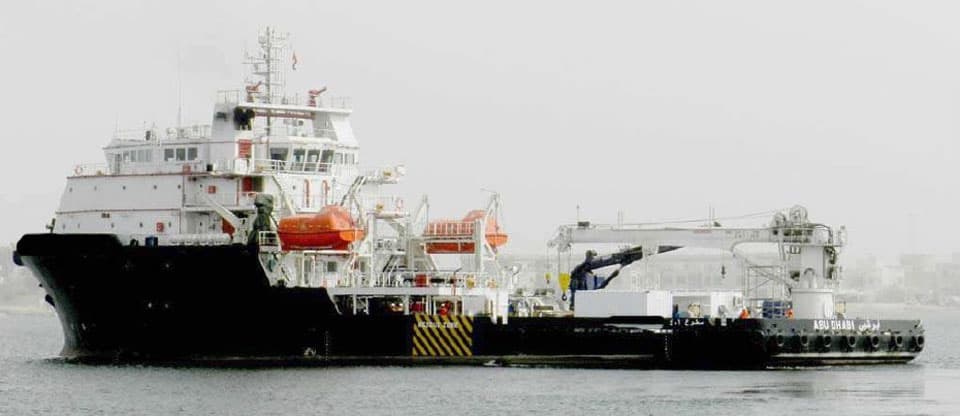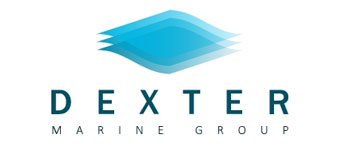Voyage Charter vs Time Charter – Everything You Need to Know

Voyage Charter vs Time Charter – Everything you need to know.
One of the biggest questions facing a charterer is whether to opt for a voyage charter or a time charter. Evaluating voyage charter vs time charter can be a complex process, but we’ve broken everything down on this page, making it easier for charterers to decide which type of vessel chartering is best for them.
What is a Charter?
A voyage charter and a time charter are two options commonly found in the chartering business. A voyage charter is when the charterer leases a vessel for a specific voyage, such as Dubai to Singapore, while a time charter is a type of lease that allows the charterer use of the vessel for a specific period of time.
As you might imagine, there are many differences between these two types of charters, and both vessel chartering options have their own pros and cons. Keep on reading this page about voyage charter vs time charter to find out which of the two options will be most suitable for your ship chartering requirements.
Voyage Charter
What is a Voyage Charter?
A voyage charter is a type of ship chartering that sees the charterer agree to lease the vessel for one specific voyage. So, for example, the agreement might be for the charterer to gain use of the charter ship for a journey from Dubai to Dover.
Features/Terms
As just mentioned, a voyage charter is when a charterer leases a vessel for one voyage. Before the charter contract is signed, the parties will agree on the end destination, any ports of call, and whether there will be any restrictions on cargo. Once signed, the charterer must not deviate from any of these agreements.
The terms and conditions of the charter agreement will also stipulate the laytime permitted. The laytime refers to the amount of time it takes for the vessel to be loaded and unloaded. As the ship owner pays for all costs at the port, they need this process to be as quick as possible. If the charterer exceeds the agreed time, they must pay demurrage to the ship owner. Conversely, the ship owner will usually refund some money if the loading and unloading is quicker than stipulated.
But who is responsible for what costs? Well, with a voyage charter, nearly all costs are covered by the ship owner. These include costs relating to staffing, berthing, loading, unloading, and fuel. They cover these costs by charging the charterer a fee for leasing the vessel.
The amount of money paid by the charterer can be determined in two ways. The most common way to pay is on a per-ton basis. As the name implies, this sees the charterer paying a set price for every ton of cargo they transport. This is preferred by charterers when the amount of cargo they’re transporting is significantly less than the vessel’s gross maximum cargo tonnage.
The other payment type is a lump sum – one payment that allows the charterer to transport as much cargo as they want to. It is the ship owner’s responsibility to ensure the cargo weight does not exceed the gross maximum tonnage of the vessel. This type of payment is preferred by charterers when they’re carrying a higher weight of cargo.
This type of vessel chartering is generally preferred by charterers. This is because it often has more competitive prices, plus they are not tied down to any long-term commitments.
Pros & Cons
Pro: Charterer not liable for any costs, except initial charter fee
Pro: Incentives to complete port operations quickly
Pro: No need to find a crew
Pro: No long-term contract
Con: Lack of flexibility for charterer
Con: Higher initial charter fee
Time Charter
What is a Time Charter?
A time charter is a type of vessel chartering that sees the charterer lease the ship for a set period of time. So, they might lease the ship for two months, during which time they have the flexibility to choose their own routes and destinations.
Features/Terms
Before anything is signed, the ship owner and the charterer will agree the exact period of time the lease will run for. Unlike with voyage charters, the two parties will not need to agree on ports of call and destinations, as the charterer has complete discretion over this.
With a time charter, the ship owner does not cover all costs. Instead, the charterer must pay for fuel and supply costs, as well as the cost of cargo operations. However, the charterer won’t have to pay such a large charter fee, which balances things out somewhat. The owner is still required to pay for the crew and ongoing maintenance, and also must ensure the vessel meets all necessary maritime safety standards.
It is generally the case that the charterer will pay for hire in advance, on a per-day basis. Payment is not usually made in one lump sum, with the charterer instead paying the lease charge in set instalments, which are usually quarterly. It’s important to note that, should the ship be held up in unforeseen circumstances, such as inclement weather, the lost time – referred to as off-hire hours – will not usually be charged for, although if too many off-hire hours are accrued, the charterer might end up being liable.
Ship owners generally prefer their vessels to be leased on a time charter. This is because time charters guarantee income for a long period of time, giving the ship owner increased security.
Pros & Cons
Pro: Guarantees charterer access to a vessel
Pro: Initial lease cost is lower
Pro: More flexibility for the charterer
Con: Several ongoing costs to pay
Con: Tied down to long-term contract
How to Choose a Charter Type
We’ve discussed voyage charter vs time charter above, looking at the various pros and cons of each. But which should you choose when looking to charter a ship?
Well, this really depends on your requirements. We’ve broken things down into five sections – charter cost, ongoing costs, flexibility, contract length, and convenience – and will let you know which of the ship chartering options is better for each one.
Charter Cost
When it comes to the initial cost of chartering a ship, it’s nearly always going to be cheaper to go with a time charter. This is because the ship owner will be more amenable to a lower price, as they know you’ll be hiring the vessel for longer. What’s more, you, and not the ship owner, will be expected to cover other costs, pushing the initial price down further.
So, if you’re looking for the lowest possible upfront cost, the best option is a time charter. However, remember that other costs will also need to be paid.
Ongoing cost
If you choose to take out a time charter, you will have to pay several costs, including fuel and supply costs. With voyage charters, the only significant cost payable is the initial charter – all other major expenses are covered by the ship owner.
Therefore, if you want the lowest possible ongoing costs, the clear winner is the voyage charter. However, the upfront cost will be more expensive than a time charter.
Flexibility
Those who sign up for a voyage charter are limited in their movements, as they will have already agreed a set route with the ship owners. Those who have taken a time charter have far more freedom, as they can choose where to go throughout their charter.
This clearly means that those looking for more flexibility should opt for a time charter, as there are no limitations on route, ports of call, and destinations.
Contract Length
With a time charter, you’re tied into a long contract, committing you to ongoing payments. Voyage charters, on the other hand, only last for the duration of the voyage, meaning voyage charters are generally much shorter than time charters.
This all means that those looking for the shortest contract should opt for a voyage charter. However, if you know you’ll constantly need an available vessel, the long contract of a time charter could be more suitable.
Convenience
There will be no need to hire and pay a crew when opting for either the time charter or the voyage charter. It’s only bareboat charters that require the charterer to hire and pay their own crew. However, the ongoing costs associated with time charters can be inconvenient.
Overall, voyage charters are the more convenient of the two options, as there’s no need to organise payment for such things as port costs and fuel. However, both options are generally far more convenient than a bareboat charter.
FAQs About Voyage Charter and Time Charter
What are BIMCO Sanctions Clause for Voyage Charter Parties 2020?
These are intended to help in two scenarios. Firstly, if one of the signatories of the agreement gets sanctioned, the other signatories will be able to end the contract and claim damages. Secondly, when the trade or activity is subject to or becomes subject to sanctions, the ship owners can refuse to perform their contracted duties.
What is the difference between bill of lading and charter party vs time and voyage charter?
A charter party is an agreement between charterer and ship owner to lease a ship. A bill of lading is an agreement that legally obligates the charterer to carry cargo that has been loaded aboard the ship.
A time charter is a type of vessel chartering whereby the ship owner leases the ship for a set length of time. A voyage charter is a type of vessel chartering whereby the ship owner leases the ship for the duration of a specific voyage.
What are the duties and responsibilities of the ship owner and charterer under a time charter and voyage charter party?
Under a voyage charter, the ship owner assumes almost all responsibility, including hiring and paying crew, and paying for all significant costs associated with the journey. The charterer simply has to pay the ship owner a fee to secure their vessel.
With time charters, ship owners must still hire and pay staff. However, most other significant costs associated with a voyage, such as fuel and port fees, must be paid by the charterer.
Why do ship owners prefer voyage charter over time charter?
Quite simply, they don’t. Ship owners usually prefer time charters, as they ensure that their ship is guaranteed to be chartered for a longer period, generating income throughout.
Voyage charters are short, meaning the ship owner must continually find new charterers to lease the vessel to – something that isn’t always possible. When a new charterer can’t be found, the ship owner loses money.
Please note that charterers are required to take out insurance for both types of charter, to cover them against damage, injury, marine salvage, and more.
Conclusion
Those looking for short-term charters are best served by opting for a voyage charter, as these don’t require a long contract to be signed. They do have a higher initial cost, but this is offset by the fact that no other significant fees need to be paid.
However, those who know they’ll regularly require the use of a vessel might be better off with a time charter, as these see vessels leased for a long period of time. During this time, the vessel can be used to travel anywhere, without restriction. Time charters cost less upfront, but require the charterer to pay various other costs, such as the cost of fuel and port fees.
Have you found this page to be helpful? If so, please share it on social media! Also, feel free to leave a comment below!



